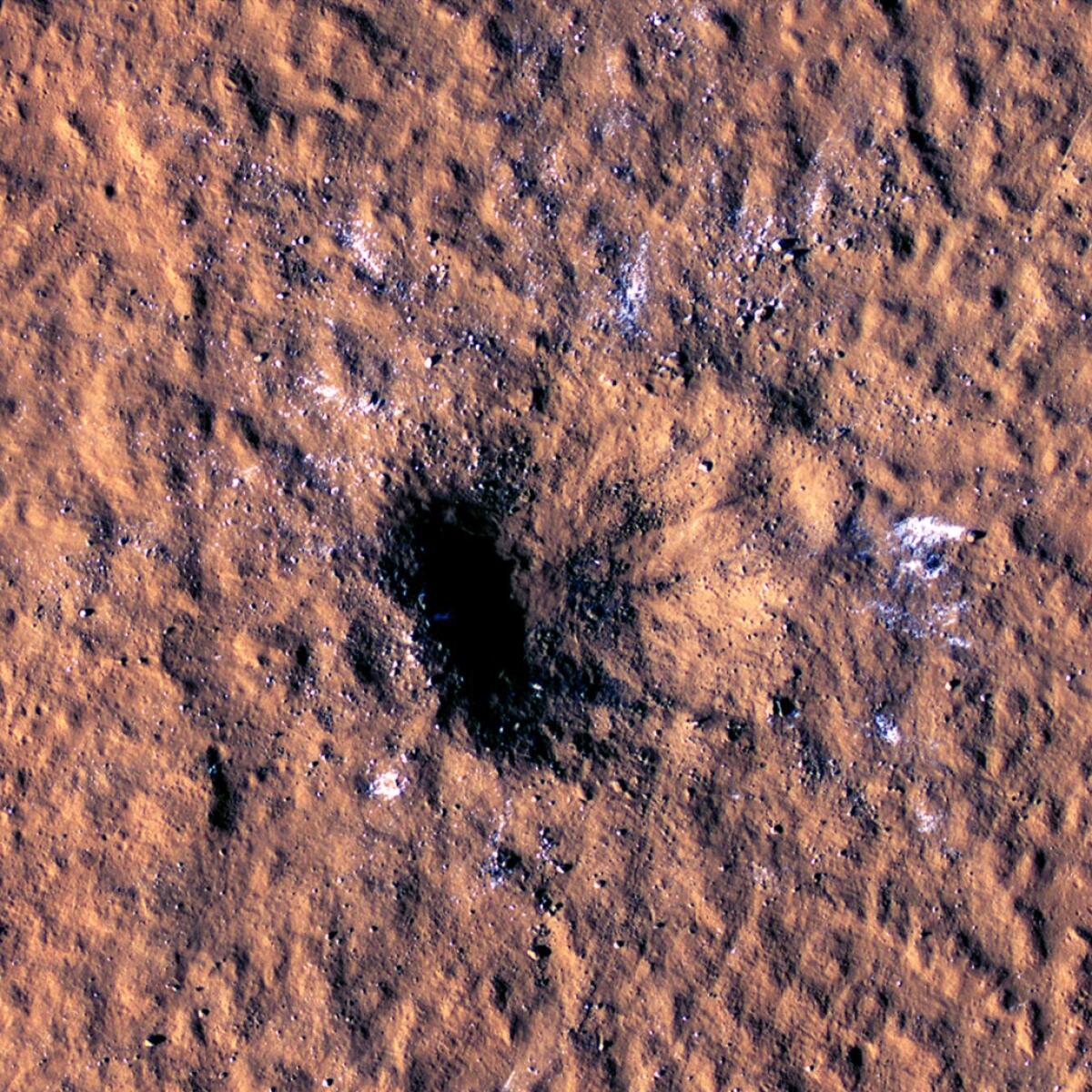Two NASA spacecraft detect biggest meteor strikes at Mars

Two NASA spacecraft at Mars — one on the surface and the other in orbit — have recorded the biggest meteor strikes and impact craters yet observed on the red planet.
The high-speed barrages last year sent seismic waves rippling thousands of miles across Mars and carved out craters nearly 500 feet (150 meters) across, scientists reported Thursday in the journal Science.
The larger of the two strikes churned out boulder-size slabs of ice, which may help researchers look for ways future astronauts can tap into Mars’ natural resources.
The Insight lander measured the seismic shocks, while the Mars Reconnaissance Orbiter provided stunning pictures of the resulting craters.
Imaging the craters “would have been huge already,” but matching it to the seismic ripples was a bonus, said study co-author Liliya Posiolova of Malin Space Science Systems in San Diego. “We were so lucky.”
NASA’s Mars Insight lander has captured the vibrations and sounds of four meteoroids striking the red planet’s surface.
Mars’ atmosphere is thin unlike on Earth, where the thick atmosphere prevents most space rocks from reaching the ground because they break and burn up instead.
A separate study last month linked a recent series of smaller Martian meteoroid impacts with smaller craters closer to InSight, using data from the same lander and orbiter.
The impact observations come as InSight nears the end of its mission. The lander touched down on the equatorial plains of Mars in 2018 and has since recorded more than 1,300 marsquakes. But now its solar panels are blanketed in dust, and its power is dwindling.
“It’s going to be heartbreaking when we finally lose communication with InSight,” said Bruce Banerdt of NASA’s Jet Propulsion Laboratory in La Cañada Flintridge, the lander’s chief scientist and a study co-author. “But the data it has sent us will certainly keep us busy for years to come.”
Banerdt estimated the lander has between four to eight more weeks before power runs out.
Suzanne Smrekar has been trying to take the temperature of Mars for nearly 25 years.
The incoming space rocks described in the new study were between 16 feet and 40 feet in diameter, Posiolova said. The impacts registered about magnitude 4.
The larger of the two struck last December some 2,200 miles from InSight, creating a crater roughly 70 feet deep. The orbiter’s cameras showed debris hurled up to 25 miles from the impact, as well as white patches of ice around the crater — the most frozen water observed at such low latitudes, Posiolova said.
Posiolova spotted the crater earlier this year after taking extra pictures of the region from orbit. The crater was missing from earlier photos, and after poring through the archives, she pinpointed the impact to late December. She remembered a large seismic event recorded by InSight around that time and, with help from that team, matched the fresh hole to what was undoubtedly a meteoroid strike. The blast wave was clearly visible.
Scientists also learned that the lander and orbiter teamed up for an earlier meteoroid strike, more than double the distance of the December one and slightly smaller.
“Everybody was just shocked and amazed. Another one? Yep,” she recalled.
Ancient Mars may have had an environment capable of harboring an underground world teeming with microscopic organisms
The seismic readings from the two impacts indicate that the Martian crust is more dense beyond InSight’s location.
“We still have a long way to go to understanding the interior structure and dynamics of Mars, which remain largely enigmatic,” said Doyeon Kim of ETH Zurich’s Institute of Geophysics in Switzerland, who was part of the research.
Outside scientists said future landers from Europe and China will carry even more advanced seismometers. Future missions will “paint a clearer picture” of how Mars evolved, Yingjie Yang and Xiaofei Chen from China’s Southern University of Science and Technology in Shenzhen wrote in an essay that accompanied the new study.








